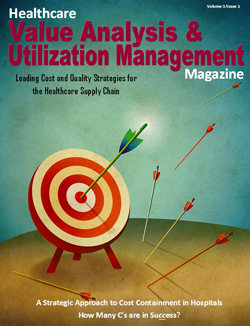As a discipline, we have been talking about clinical supply integration (CSI) for a number of years now, but do we really know what this term means? Based on my readings in our industry publications, listening to podcasts, and hearing dialog from our supply chain community, I’m not sure we do. Here are some descriptions from supply chain sources on what is currently described as clinical supply integration:
- Engaging physicians to reduce variation, lower costs, and enhance performance.
- Form a sustainable committed partnership between supply chain and clinicians that improves care delivery and financial performance.
- A system-based approach to remove practice variation around consumption of medical devices, medical equipment, and pharmaceuticals.
We believe that a much better description for clinical supply integration is giving control of your healthcare organization’s supply chain expenses to the people who have the most influence over it – your clinicians. This is because people like the changes they decide to make that are not forced, imposed, or dictated. This can best be accomplished by:
1. Providing intuitive activity-based expense data to frontline clinicians. Right now, except for budget reports which are viewed at 30,000 feet, your clinicians have no way of knowing that their expenses are above average, higher than their peers, or increasing year-over-year. This can all change for the better if you provide timely and intuitive supply chain expense trending reports.
2. Empowering your clinicians to control their own expenses. By providing insightful reports to your clinicians on their unfavorable supply expense usage patterns, they will naturally react to correct these utilization misalignments. This is because clinicians don’t want to be out of step with their peers.
3. Celebrate and report success to senior management. The most successful CSI initiatives we have seen have celebrated and reported their success to their senior management. The celebration could be in the form of a free lunch, days off, or monetary consideration. It doesn’t matter what it is as long as your clinicians are recognized and rewarded for their success.
I think all healthcare organizations are on the right track with their clinical supply integration initiatives, but I believe the best approach is to have supply chain and value analysis professionals support, guide, and enable their clinicians to make change happen themselves.
| About Robert T. Yokl, Founder & Chief Value Strategist for SVAH Solutions |
|---|
| Robert T. Yokl is President and Chief Value Strategist at SVAH Solutions. He has four decades of experience as a healthcare supply chain manager and consultant, and also is the co-creator of the Clinitrack Value Analysis Software and Utilizer Clinical Utilization Management Dashboard that moves beyond price for even deeper and broader clinical supply utilization savings. Yokl is a member of Bellwether League’s Bellwether Class of 2018. https://www.SVAH-Solutions.com https://www.SavingsValidator.com |
Articles you may like:
5 Incredibly Useful KPI Tips for Supply Chain/Value Analysis Professionals to Know Where You Stand





